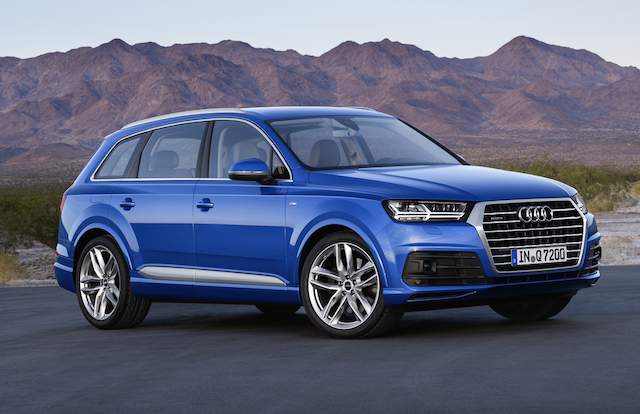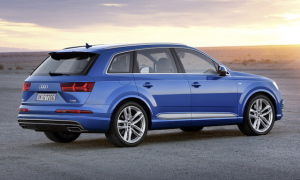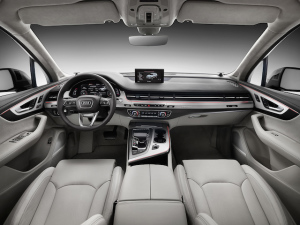
The new Audi Q7 weighs in at 1995kg, around 325kg lighter than the outgoing model, shedding bulk that is roughly “the equivalent of a concert grand piano”, says the carmaker.
Audi took the covers off the second-generation SUV before its first official unveiling at next month’s Detroit motor show. It revealed a smaller, lighter and more fuel-efficient Q7 that will arrive in New Zealand later next year, perhaps around October/November.

Five- and seven-seat models are available for the world market, as is a diesel-electric plug-in hybrid. There is also an optional all-wheel steering system. But it is not yet known what variants Audi NZ will take. Its marketing executive Fiona Woolley said: “It’s too early – we haven’t even looked at Q7 orders.”
Audi’s flagship SUV is based on a newer version of the Volkswagen Group’s modular longitudinal (MLB) platform and will come with up-to-the-minute communications and safety equipment. It makes extensive use of lightweight materials throughout, including aluminium body panels, a lighter electrical system, and lighter floor in the luggage area.
The new model has sharper design lines and has borrowed styling cues from Audi’s Q family, including the Q3 facelift. It isn’t as curvy and bulky looking as the current eight-year-old Q7. It is roughly the same height but is 37mm shorter in length and 15mm narrower in width.

Despite the reduced exterior dimensions cabin space for occupants has actually increased, says Audi. Headroom is up by 41mm in the front seats and 23mm in the second row. Legroom in the second row has grown by 21mm. In the seven-seater luggage space varies from 295 litres with all three seat rows in use to 770 litres with the third row folded flat. The five-seater has 890 litres of space in the rear, or 2075 litres with the second row folded.
Audi will launch the Q7 in Europe with the choice of two engines, most likely the ones Audi NZ will take. Both meet the strict Euro 6 emissions standard. There’s a 3.0-litre V6 turbo-diesel generating 200kW/600Nm and good for claimed fuel use of 5.7 litres/100km (50mpg); and a 3.0-litre petrol unit delivering 245kW/440Nm and a claimed 7.7 litres/100km (37mpg).

Other engines reportedly in the pipeline are a 185kW/370Nm 2.0-litre petrol and a 160kW/500Nm 3.0-litre diesel. The e-tron variant combines a V6 diesel with an electric motor for an overall output of 275kW/700Nm, claimed fuel use of 1.7 litres/100km (167mpg), and C02 exhaust emissions of 50gr/km.
All Q7 engines will be mated to a new eight-speed tiptronic automatic transmission. Audi’s permanent all-wheel-drive quattro system is standard across the range. It distributes power between the front and rear axles in a 40:60 split but can transfer up to 70 per cent to the front and 85 per cent to the rear if needs be. Braked towing capacity for the Q7 is 3500kg.
